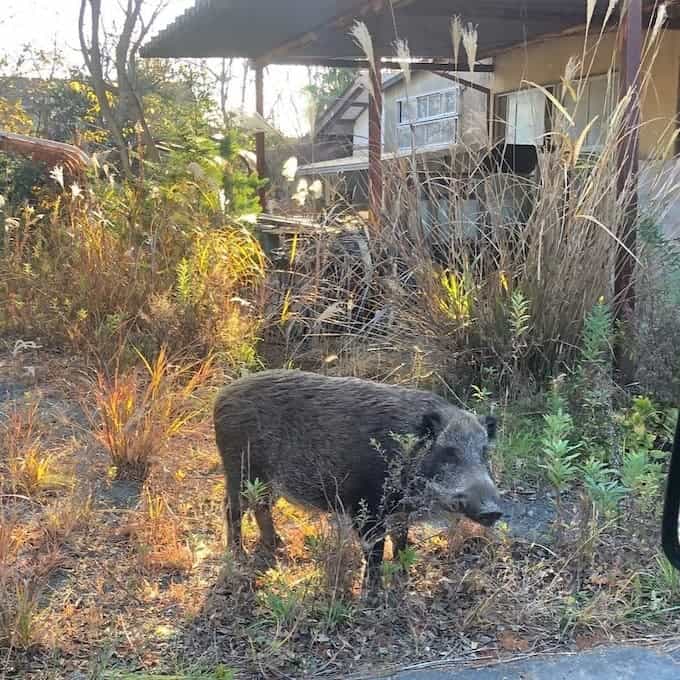
In the wake of the 2011 Fukushima nuclear power plant disaster, Japanese authorities set up an exclusion zone which grew larger and larger as radiation leaked from the plant, forcing more than 150,000 people to evacuate from the area. A decade later, that zone remains in place and many residents have not returned with entire towns left completely deserted — not counting other animals.
After humans fled Fukushima prefecture, wildlife took over. According to Japanese researchers who analyzed DNA samples from the site, wild boars have bred with domestic pigs that were left behind during the hasty evacuation. As a result, wild boar-pig hybrids now roam the radioactive exclusion zone. However, the researchers add that the hybrids have suffered no mutations as a result of radiation exposure. In fact, they seem to thrive.
The researchers embarked examined the DNA of wild boars and domestic livestock from Fukushima to see how the animals were affected by life in the radiation-contaminated area. To their surprise, they instead found evidence of hybridization, or cross-breeding, between the two.
There are now hundreds of wild boars roaming Fukushima, which registers levels of the radioactive element cesium-137 some 300 times higher than the safe threshold. With virtually no predators, the boars, originally from nearby mountains, have commenced a “biological invasion”.

Of the 338 wild boars whose genes were sequenced, at least 18 individuals displayed domestic pig genes. However, more domestic pig genes have been found in wild boars since the study was completed, highlighting the need for more genetic monitoring at Fukushima.
“Frequencies of this haplotype have remained stable since first detection in 2015. This result infers ongoing genetic pollution in wild boar populations from released domesticated pigs,” the scientists wrote in the journal Proceedings of the Royal Society B.
These changes are at a low frequency, and as the hybrids will breed with wild boars, the domestic pig genes will be diluted over time. The researchers believe there will be no changes in the wild boars’ behavior over time. Currently observed abnormal wild boar behavior is pinned to the absence of people rather than some genetic component.
Since 2018, people have started slowly moving back into previously abandoned areas close to Fukushima. It seems like it’s only a matter of time before the boars have to move back to the mountains. In the meantime, they seem to be enjoying themselves.
Perhaps some areas of Fukushima will remain deserted by humans for decades and may share the fate of Chernobyl. Today, the exclusion zone of Pripyat in Ukraine is a haven for wildlife, with European bison, boreal lynx, moose, brown bears, and wolves thriving in the radioactive town.









